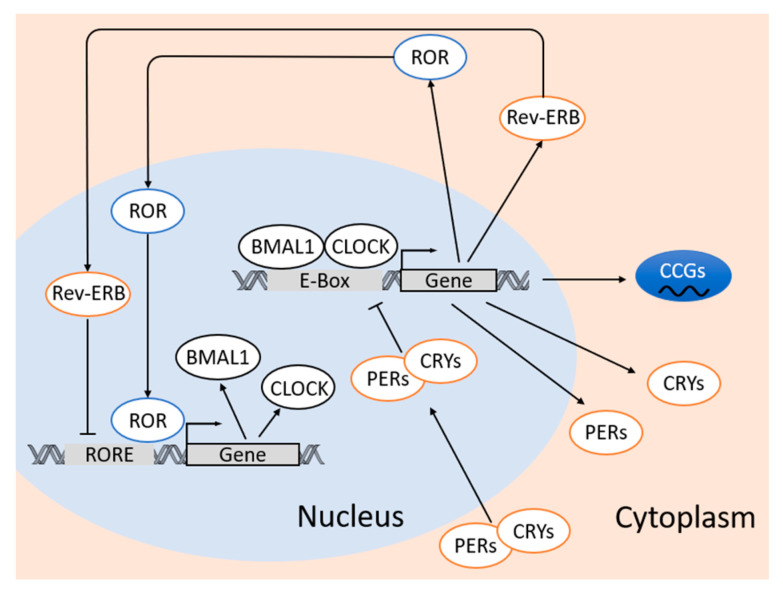Figure 1.
Molecular clock mechanism in adipose tissue. The molecular clockwork in adipose tissue relies on the dimerization of BMAL1 and CLOCK proteins, whereas the heterodimer of CLOCK:BMAL1 binds to E-box sequence (5′-CACGTG-3′) in the promoters and activates the transcription of Per1–3, Cry1/2, ROR and Rev-ERB. When the cytoplasmic levels of PERs and CRYs reach a certain threshold, PERs and CRYs dimerize and translocate into the nucleus and inhibit the CLOCK:BMAL1-mediated transcription. REV-ERB negatively regulates Bmal1 and Clock expression, whereas RORs positively regulate Bmal1 and Clock expression via ROR response elements (RORE) at the promotor regions. The molecular circadian clock also leads to rhythmic expression of clock-controlled genes (CCGs) through CLOCK:BMAL1-mediated activation of circadian promoter elements including E-boxes, D-boxes, and ROR response elements. BMAL1, brain and muscle Aryl hydrocarbon receptor nuclear translocator--like protein 1; CLOCK, circadian locomotor output cycles kaput; CRY, Cryptochrome; PER, Period; REV-ERB, reverse ERB; ROR, retinoic acid receptor-related orphan receptors.

